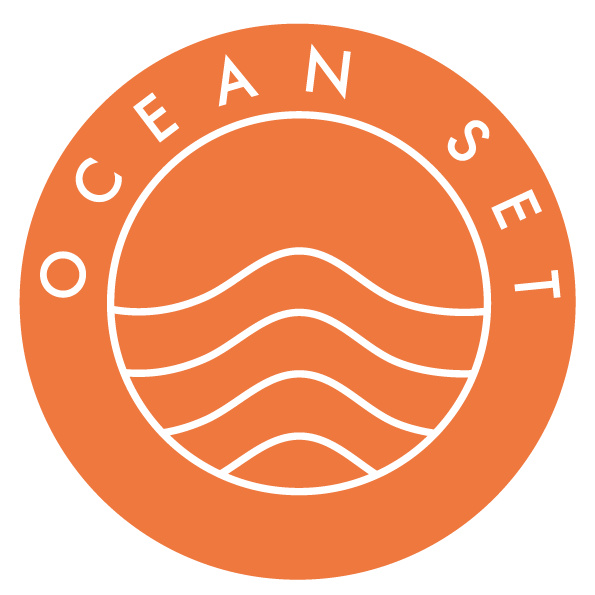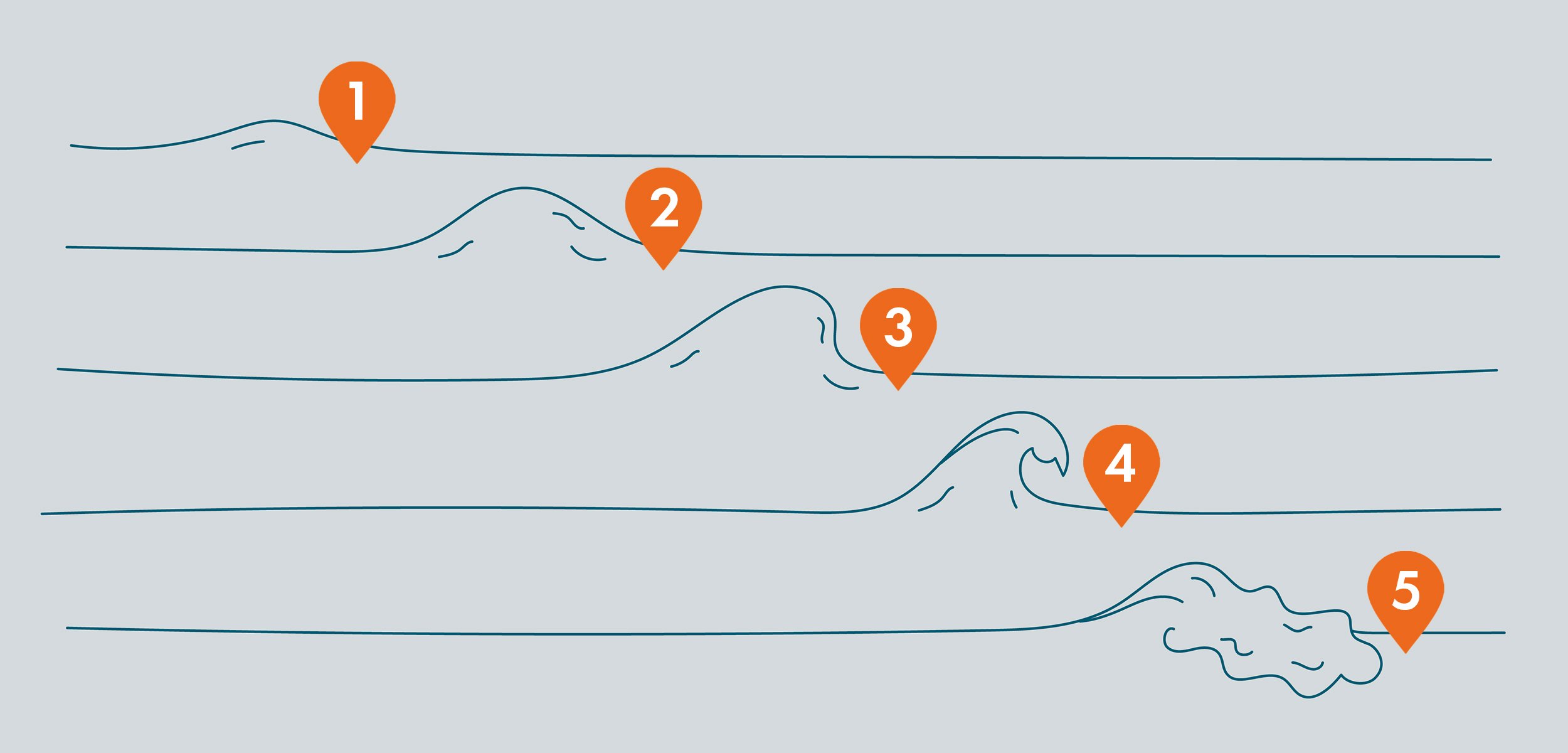How to read the stages of a wave and when to catch them
Being able to read the different stages of a wave and knowing where to position yourself, when to paddle and catch a wave, pop up and take off is one of the most important skills to learn in surfing - which takes time and practice in the water.
From the diagram above we can see that at Stage 2 and 3 the wave is forming and has the right amount of power and steepness to paddle into to and catch. However, being able to spot when the wave is forming at Stage 1 is important so that you can get into position for when the wave changes from Stage 1 to Stage 2 or 3, which can happen quickly.
Once you have identified a Stage 1 wave starting to form, position yourself about 5 metres from where the waves are breaking to give you enough space so that you can be in the best place to start paddling as the wave changes from a Stage 1 to a Stage 2 or Stage 3 wave.
As you paddle it is important to keep looking over your shoulder to see how the wave is forming, and how fast it is becoming a perfect green wave. You can adjust your paddle speed depending on how fast the wave is forming. You also want to see which way the wave is peeling - either left or right - and make sure you are heading away from the peak and where the white water will form.
As you feel the wave start to lift you on the board - do a few more powerful paddle strokes, and if you need more momentum drop your head until you feel the wave taking you, and get into the cobra position with your hands on the board by just below your chest and get ready to pop up and take off.
The different stages of a wave
Stage 1: At this stage, the wave is just a lump in the water, an indication that a wave is forming, but too soon to catch.
Stage 2 and 3: This is the perfect stage to catch what is known as a green wave - it is unbroken but has the right amount of power to paddle into it.
Stage 4: At this stage it is too late to catch the wave as it is already breaking, with the lip of the wave ready to crash down with a lot of power. You want to avoid being caught here - known as the impact zone.
Stage 5: The wave has already broken and becomes whitewater at this stage. Great for beginners to learn to surf in.
For more surfing and surf fitness tips follow us on instagram

